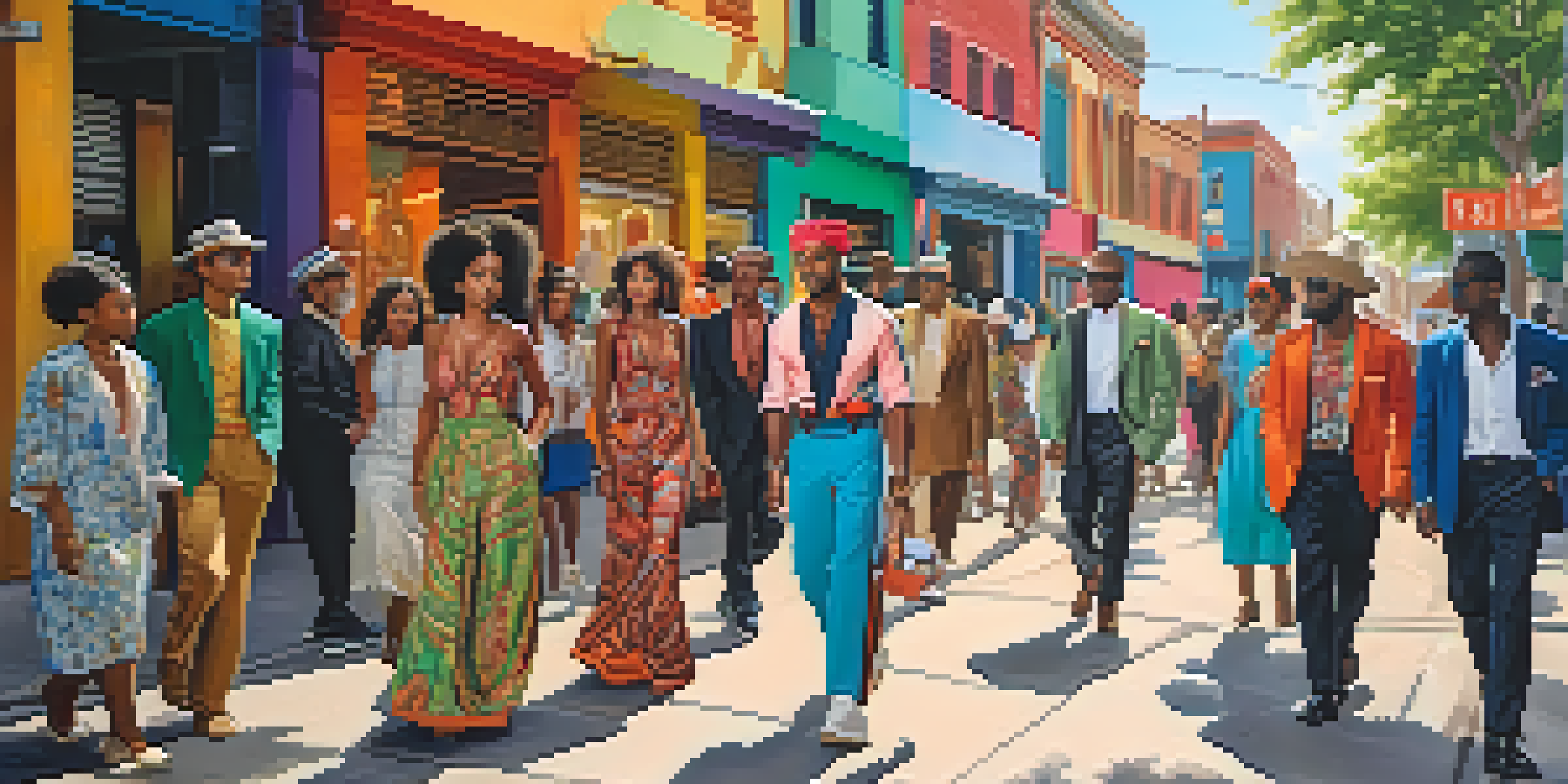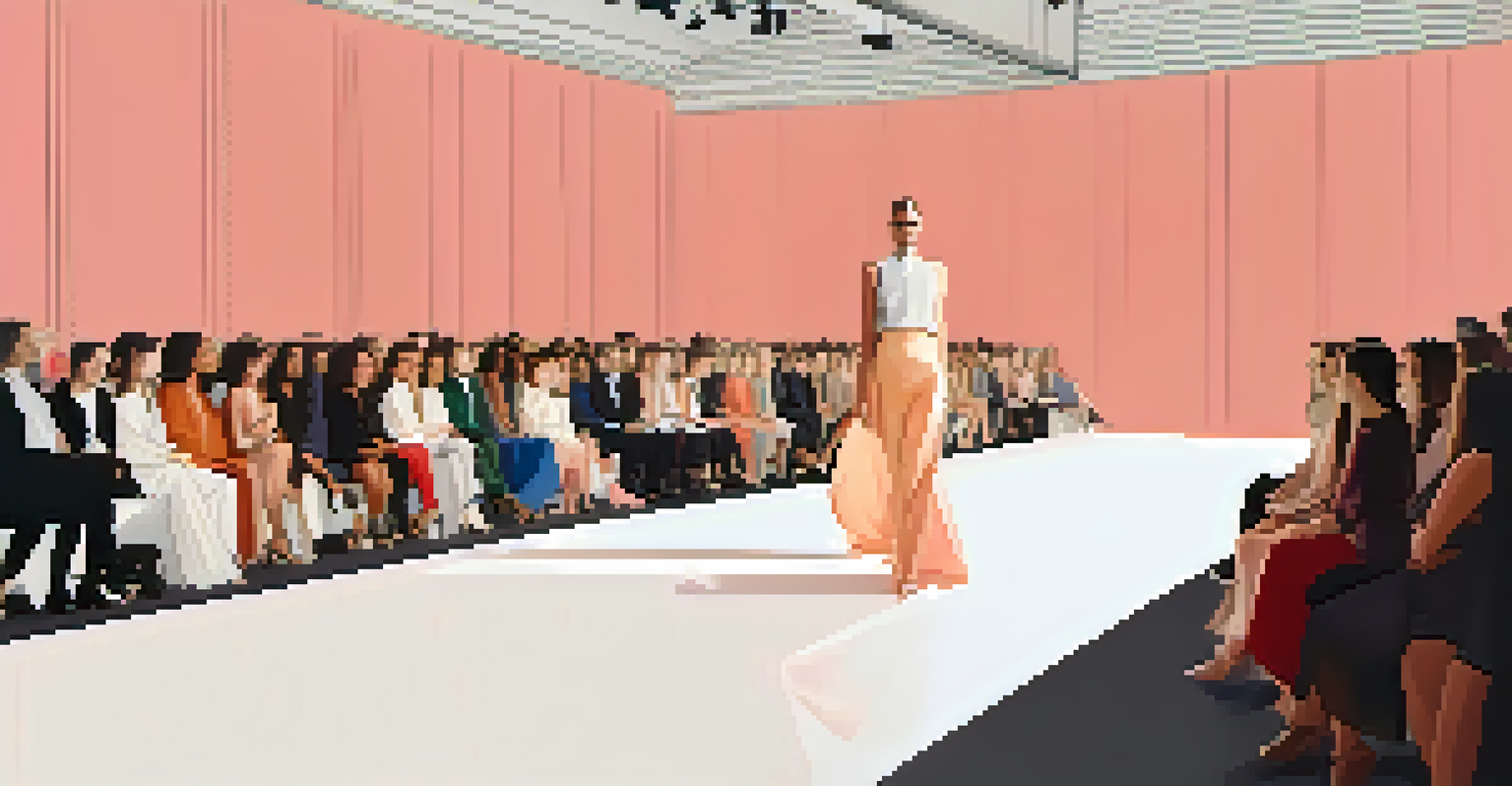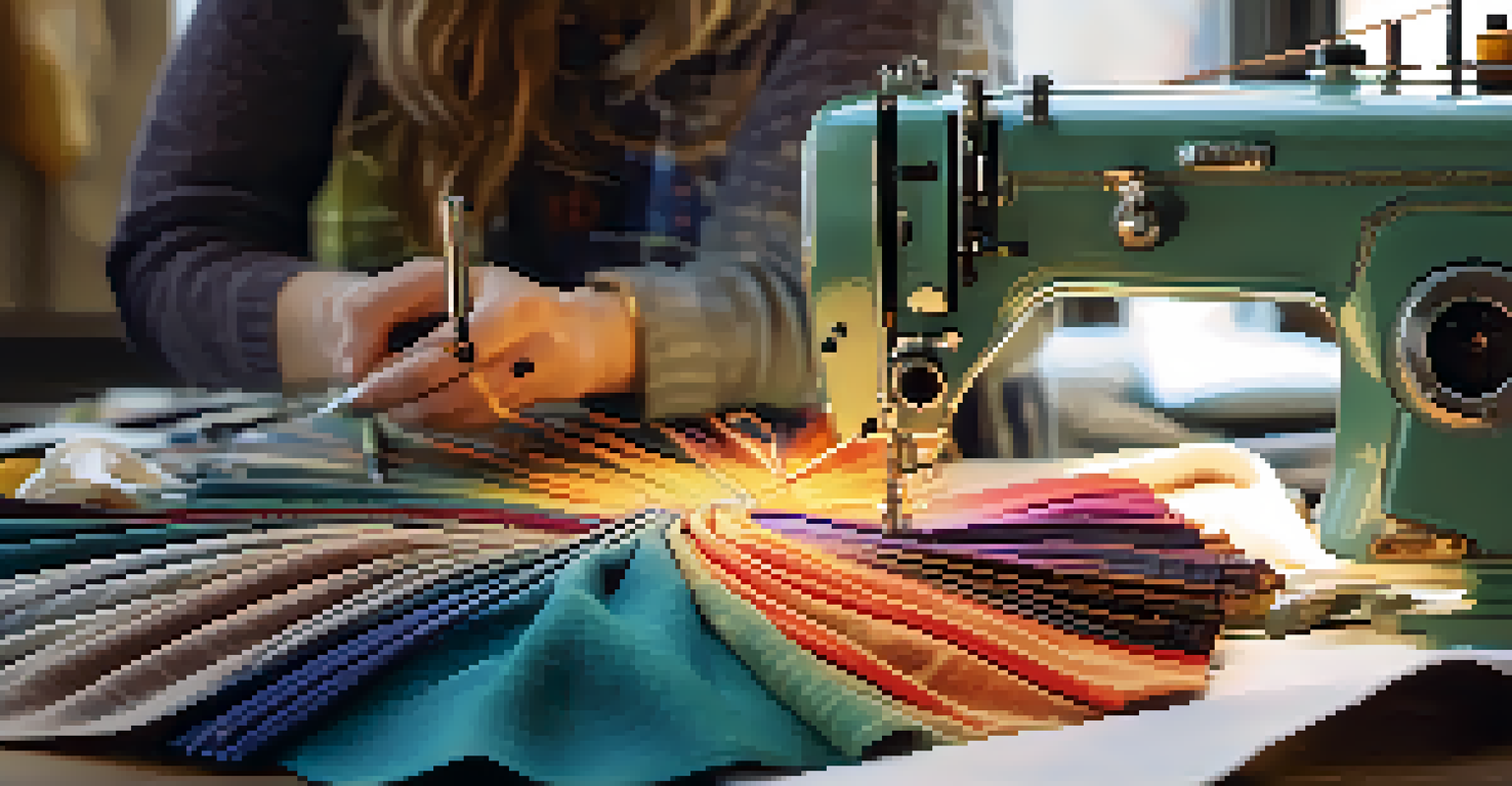The Intersection of Culture, Fashion, and Gender Identity

Understanding Culture's Role in Fashion Choices
Culture plays a pivotal role in shaping our fashion choices, influencing what we wear and how we express ourselves. From traditional garments that signify heritage to contemporary trends that reflect societal changes, culture acts as a tapestry that weaves together personal and collective identities. For instance, in many cultures, colors and styles carry specific meanings—think of the vibrant saris of India or the elegant kimonos of Japan, each telling a story steeped in tradition.
Fashion is the armor to survive the reality of everyday life.
Fashion, therefore, becomes a medium through which cultural narratives are expressed and preserved. As globalization fosters the exchange of ideas, we see these cultural influences cross borders, giving rise to hybrid styles that celebrate diversity. This blending of influences not only enriches our wardrobe but also challenges the notion of a singular fashion identity, encouraging individuals to explore and embrace multiple facets of their heritage.
Ultimately, understanding this intersection of culture and fashion helps us appreciate the richness of personal expression. It empowers individuals to choose garments that reflect their unique backgrounds while navigating the complexities of modern identity. By embracing the cultural influences in fashion, we become more mindful of the stories behind our clothes.
Fashion as a Reflection of Gender Norms
Fashion has long been a mirror reflecting societal norms, particularly in how gender is perceived and expressed. Historically, clothing has been tightly bound to gender roles, with distinct styles for men and women. For instance, the sharp suits associated with masculinity and the flowing dresses seen as feminine exemplify this divide, reinforcing traditional gender expectations.

However, as society evolves, so too does the relationship between fashion and gender. Designers and brands are increasingly challenging these norms, introducing gender-neutral or unisex clothing lines that blur the lines between traditional male and female attire. This shift not only promotes inclusivity but also allows individuals to express their identity beyond the constraints of conventional gender categories.
Culture Shapes Fashion Choices
Cultural influences significantly impact our clothing choices, blending traditional and contemporary styles that reflect personal and collective identities.
By embracing diverse representations in fashion, we create a space where individuals can feel empowered to dress in ways that resonate with their true selves. This evolution highlights the importance of fashion as not just a form of self-expression but also a powerful tool for challenging and redefining gender norms.
The Impact of Intersectionality on Fashion Choices
Intersectionality—a term that acknowledges how various social identities overlap—plays a crucial role in understanding fashion and gender identity. Each person's experience is shaped not only by their gender but also by factors like race, class, sexuality, and ability. This complexity means that fashion choices are often influenced by a myriad of cultural expectations and personal experiences.
Clothes mean nothing until someone lives in them.
For example, a Black woman may navigate fashion differently than a white woman, influenced by her cultural background and societal perceptions. This difference highlights the importance of representation in fashion, as diverse voices are essential for creating inclusive narratives that resonate with a wider audience. Brands that recognize and celebrate intersectionality can foster a more inclusive environment, allowing for a broader range of expressions and identities.
Recognizing intersectionality in fashion not only enriches the industry but also empowers individuals to embrace their multifaceted identities. As we continue to advocate for diversity in fashion, we create a community that honors and uplifts each person's unique story.
Cultural Appropriation vs. Cultural Appreciation in Fashion
In the world of fashion, the line between cultural appropriation and cultural appreciation can often blur. Cultural appropriation involves taking elements from one culture, often without permission or understanding, which can perpetuate stereotypes and disrespect the originating culture. A classic example is when high-fashion brands take traditional garments from marginalized cultures, stripping away their significance while profiting from their aesthetic appeal.
Conversely, cultural appreciation involves a respectful acknowledgment and celebration of another culture’s contributions. This can include collaborating with artists or designers from that culture to create pieces that honor their heritage. When done correctly, this approach can foster greater understanding and respect between different cultures, turning fashion into a bridge rather than a barrier.
Gender Norms in Fashion Evolve
Fashion is increasingly challenging traditional gender roles, promoting inclusivity through gender-neutral and unisex clothing lines that allow for self-expression.
Navigating this complex terrain requires sensitivity and awareness. By promoting cultural appreciation in fashion, we can celebrate diversity while ensuring that we honor the histories and stories behind the styles we adopt.
The Role of Social Media in Shaping Fashion and Gender Identity
Social media has revolutionized the fashion landscape, serving as a platform for diverse voices to share their styles and stories. Platforms like Instagram and TikTok allow individuals to showcase unique interpretations of fashion, often challenging traditional gender norms in the process. This democratization of fashion empowers users to curate their identities and connect with others who share similar experiences.
Moreover, social media has amplified discussions around gender identity, allowing marginalized voices to be heard. Influencers and activists use these platforms to advocate for inclusivity, encouraging brands to rethink their messaging and product offerings. This shift not only brings awareness to various gender identities but also influences mainstream fashion trends, paving the way for a more inclusive industry.
As we engage with fashion through social media, we create a community that embraces authenticity and self-expression. This evolving landscape fosters a culture where individuals can explore their identities freely, shaping the future of fashion in a way that reflects a broader spectrum of gender experiences.
Fashion as a Tool for Activism and Social Change
Fashion has the potential to serve as a powerful tool for activism and social change, particularly in the realm of gender identity. Many designers and brands are using their platforms to raise awareness about issues such as gender inequality and LGBTQ+ rights. Through campaigns that promote inclusivity and representation, fashion can spark important conversations and inspire action.
For instance, collections that highlight gender-fluid designs not only challenge traditional perceptions of clothing but also advocate for broader acceptance of diverse identities. By showcasing models of various gender identities and backgrounds, brands can normalize these representations in the fashion industry and beyond. This visibility is crucial in fostering a culture of acceptance and understanding.
Fashion as a Tool for Activism
Fashion serves as a powerful vehicle for activism, advocating for social change and inclusivity by raising awareness about issues like gender inequality and LGBTQ+ rights.
Ultimately, when fashion is used as a vehicle for activism, it can drive significant social change. By aligning fashion choices with values of equality and inclusivity, individuals can express their beliefs while influencing the industry to embrace a more diverse future.
The Future of Fashion, Culture, and Gender Identity
As we look toward the future, the intersection of fashion, culture, and gender identity continues to evolve, reflecting the dynamic nature of society. The growing emphasis on inclusivity and representation indicates a shift towards a more equitable fashion landscape, where diverse identities are celebrated rather than marginalized. This evolution opens up new avenues for creativity and expression, empowering individuals to embrace their unique styles.
Moreover, as consumers become more conscious of the brands they support, there is an increasing demand for transparency and ethical practices. Fashion companies that prioritize sustainability and inclusivity are likely to thrive in this new landscape, as consumers seek to align their values with their purchasing decisions. This shift not only benefits the industry but also promotes a more responsible approach to fashion.

In conclusion, the future of fashion lies in its ability to adapt and respond to the changing cultural and social climate. By fostering an environment that embraces diversity and challenges traditional norms, we can create a fashion world that is as unique and multifaceted as the individuals who inhabit it.